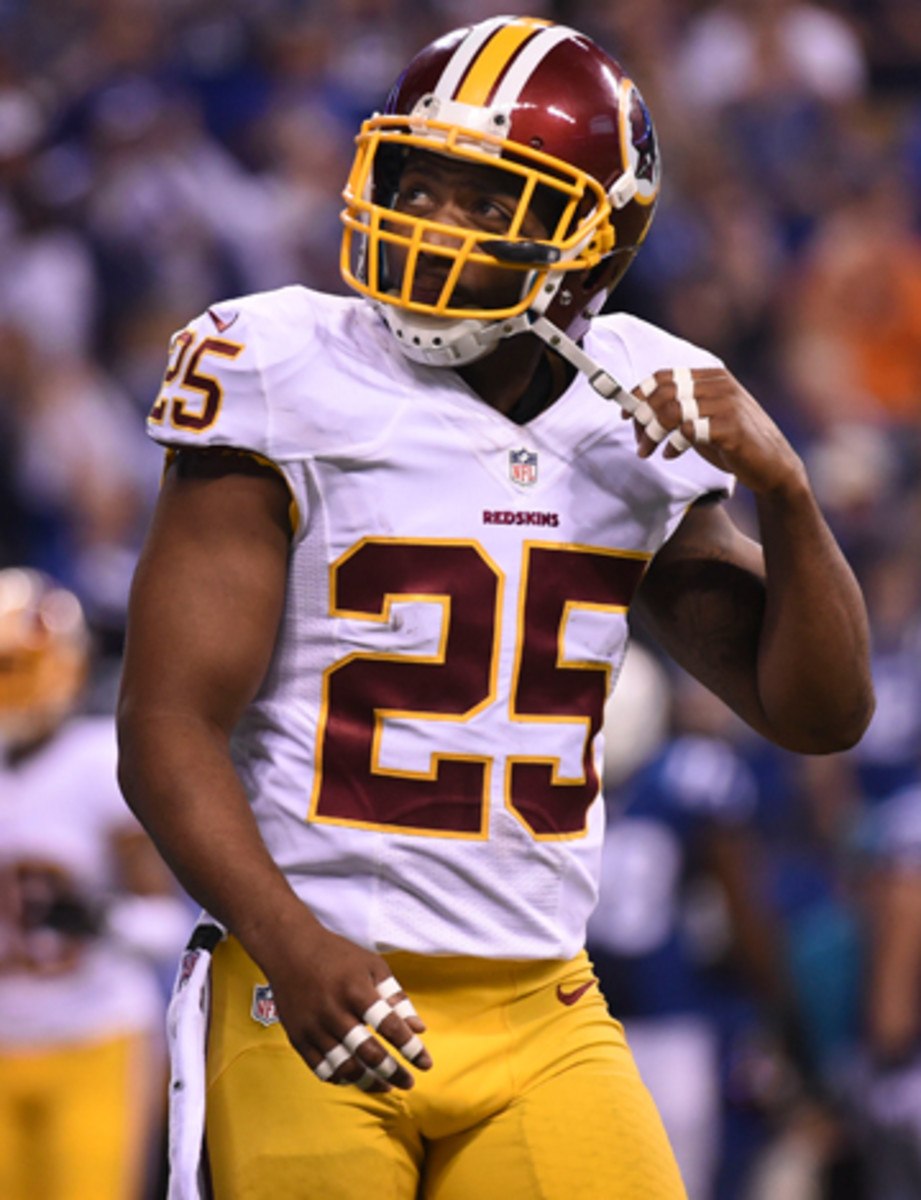Robert Alford’s Well-Known Tutor

The NFL’s most improved cornerback over the course of last season was Atlanta’s Robert Alford. After Desmond Trufant tore his pectoral in Week 9, Alford, an up-and-down fringe starter for much of his four-year career, assumed Trufant’s duties and began traveling with No. 1 receivers. In the elevated role Alford didn’t just survive, he thrived. This included covering the slot, which he hadn’t done much before. The Falcons, having stumbled upon a second No. 1 corner, wisely locked him up in December with a four-year, $38 million extension.
I recently asked Alford what was behind his 2016 improvement.
“It was more film study,” he said. “Everyone wanted to say when Tru went down that my game elevated. But I felt like my game was improving as the season went on, whether he was there or if he wasn’t there. I didn’t feel like that was a big thing that played a part in it, in me improving each and every week. I just went with that mindset.”
NFL players don’t grow as a film student on their own. Like anything else, it’s something they’re taught. I asked Alford who taught him. “My DB coach Marquand Manuel,” he said. “I also had a friend named Ryan Clark.”
You mean the former Steelers safety?
“Correct.”
Interesting. The most improved cover corner in football attributes much of his progress to what he’s learned from a retired safety.
“(Robert) is giving me too much credit,” Clark told me, “because I don’t play football; he does.” Clark, who now works as an analyst for ESPN, works with a handful of NFL players, watching their tape and providing feedback, and when possible, training with the guy. Tracy Porter, Clark’s former Washington teammate, was his first pupil. Included in today’s group are Giants safety Landon Collins and Bills first-round rookie cornerback Tre’Davious White.
“There are so many different training facilities and different people doing this type of work now I decided if I was going to work with DBs, I’d work on it as a whole. Some guy that went to school for kinesiology and got his masters in something else and went to school to learn how to train people doesn’t understand the intricacies of playing the defensive back position.”

The arrangements are often made through Performance Enhance Professionals, a training facility in Arizona (the same place Steelers linebacker James Harrison trains, Clark points out). In Alford’s case, the connection went way back. Alford’s older brother, Fred Booker, was Clark’s teammate at LSU. Alford knew Clark before either man reached the NFL.
“It’s probably more informal than you think,” Clark says. “These guys are like my little brothers. Like my friends. It’s about so much more than just training them, about so much more than their success at football. Although it is huge. I enjoy when they play well. When I’m sitting at press row at the Super Bowl and Robert Alford is picking off the greatest quarterback of all time for a pick-six, it felt good to be there. It felt good to feel like I had some part in that journey.”
It's not surprising that Clark would bring up Alford’s Super Bowl pick-six. I had asked Alford if there was a single play that best illustrated his growth as a student of the game. That’s the one he identified.
On that play, the Patriots were in a three-receiver bunch, with the receivers crisscrossing on their releases at the snap. This tactic, which naturally defeats coverages like the man-to-man that Atlanta played more down the stretch, is a staple of New England’s. On this play, Alford recognized that his receiver, Julian Edelman, was running a crossing route. The Falcons had an extra free defender, safety Keanu Neal, in the shallow middle of the field. Instead of trying to fight through all the congestion and chase Edelman, Alford let him go, knowing that Neal was there to pick him up. Now Alford was the free defender, which allowed him to read Brady and jump his throw to Danny Amendola.
Had the Falcons held on and won, this would have been the defining play of Super Bowl 51. Instead, it’s a footnote. A bitter footnote?
“I’m happy with it,” Alford said. “Not everyone gets to pick off Tom Brady in the Super Bowl. Not everyone is able to get to the Super Bowl and get an interception. But I’m moving on. As you said, we didn’t win it.”
Alford also can’t help but remember that this same sequence nearly played out again later in the game. But this time, Alford failed to catch the interception.
“I wish I could’ve gotten that second one back,” he said. “I wish I could’ve gotten my head around in time and snagged that one. Maybe the game would’ve turned out differently.”
It’ll be interesting to see Alford’s role in 2017. Trufant is back now and, judging from the five-year, $69 million contract they gave him this offseason, the Falcons see him as their No. 1 corner. Alford undoubtedly will start, but where will he primarily line up?
“I have no idea. Like Coach (Dan) Quinn said, going into training camp, it’s a competition. For everyone. No one has a spot. So we won’t know that until after the last preseason game. But I would loveto be inside in our nickel coverage.”
That’s where Alford played in Super Bowl 51, against the league’s shiftiest slot receiver, Edelman. It’ll be lost in history, but it’s evident on film: Alford won the battle against Edelman that day. The Falcons likely now have a premium slot corner.
• Question or comment? Email us at talkback@themmqb.com.
